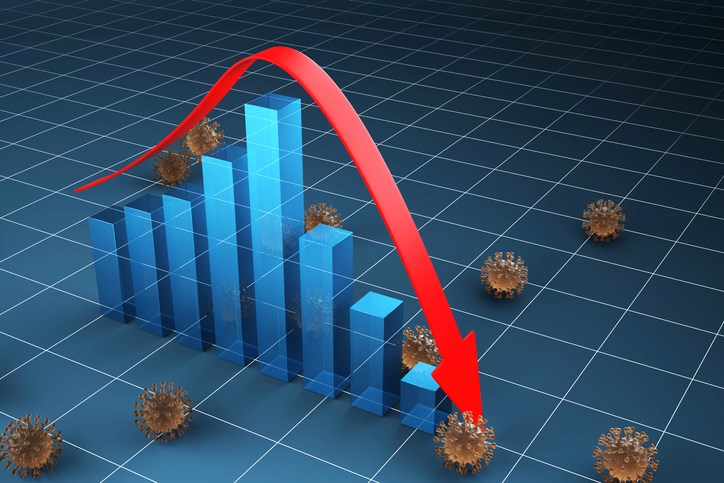REGINA —
The Saskatchewan Ministry of Health released their biweekly community respiratory illness surveillance program (CRISP) report for Jan. 19, covering the period Jan 1 to 14 and these are five things you should know about it.
COVID-19, flu, RSV all declining
In the first week of the new year (Jan 1 to 7), an increase in COVID-19 and RSV cases occurred; however, this increase was not sustained into the most recent reporting week.
COVID-19 lab-confirmed cases decreased from 371 in the first week of January to 317 in the most recent week. Test positivity decreased to 5.4 per cent from 6.9 per cent.
Respiratory Syncytial Virus (RSV) decreased from 199 to 159 positive laboratory tests with the highest respiratory virus test positivity of 14.5 per cent, mainly in preschool age children.
Influenza activity in Saskatchewan continues to decrease.
The majority of respiratory virus hospitalizations continue to be COVID-19, followed by RSV.
In the most recent reporting period, sentinel indicators of respiratory transmission are increasing; however, not to the level they were early December:
Weekly visits to the Saskatchewan emergency departments for respiratory-like illness (RLI) have increased from 18.5 per 1,000 visits in the previous week to 23.7 per 1,000 this week.
Calls to 811 HealthLine for RLIs increased from 61.7 to 72.5 per 1,000.
School illness absenteeism data indicated 4.6 per cent of Saskatchewan students were absent due to illness Jan 1 to 7, which rose to 8.6 per cent in the most recent surveillance week.
Saskatoon wastewater COVID-19 viral load increased from moderate to high, and Regina and South West reported decreased from moderate to low in the current week compared to the previous week.
COVID-19 test positivity down but deaths up
COVID-19 test positivity in Saskatchewan was 5.4 per cent, a decrease from 6.9 per cent previous week. Cases are largely in the 65 years and over age group (43 per cent.)
COVID-19 outbreaks in high-risk settings have increased this week - 10 new COVID-19 outbreaks were reported last week compared to four to six per week over the previous three weeks.
BA.5 and its sublineages (denoted as BA.5) are the most commonly detected variants (95 per cent of current reporting period), followed by BA.2 (three per cent ) and XBB.1.5 (1.3 per cent).
COVID-19 hospitalizations decreased from 119 to 81 admissions per week.
COVID-19 ICU admissions remain stable with an average of eight admissions per week – most were 60 years and older.
The proportion of staffed inpatient beds occupied by COVID-19 patients has increased from 5.1 per cent in the previous week to 6.4 per cent this week.
COVID-19 deaths have increased from 10 in the previous two weeks to 16 in the current two-week period.
Influenza down, test positivity low
Influenza detections decreased from 32 in the previous week to 21 positive laboratory tests this week.
Influenza test positivity dropped from 7.7 per cent in the third week of December to 1.5 per cent this week.
Influenza cases occurred equally among preschool, 20-64 years and senior age groups in the past week.
No influenza outbreaks in a high-risk setting were reported in the past two weeks.
Influenza hospitalizations and ICU admissions have decreased in this reporting period.
No deaths due to Influenza were reported in the past two weeks.
Influenza test positivity is low with zero to four positive influenza lab tests across all zones.
Other Respiratory Viruses
RSV cases are largely in the pediatric age group – in the most recent surveillance week 75 cases (50 per cent) were aged 0 to 4 years. Another 30 per cent (45 cases) were among seniors.
RSV hospitalizations decreased from 66 in the previous week to 59 admissions this week. RSV ICU admissions remained same as previous week, eight admissions. The majority of RSV hospitalizations and ICU admissions occurred in children aged 0 to 19 years.
“Other” respiratory viruses fluctuated between 120 to 145 lab confirmations per week over the past month.
Outbreaks of “other” viruses in high-risk settings varied between zero and five outbreaks per week over the past month.
The vaccine situation
With the exception of Regina, all areas of the province have less than 50 per cent of their population up-to- date for COVID-19 vaccines. Less than half of individuals aged 50+ have had more than one booster dose (46 per cent).
Of those aged five years and older, 21 per cent have received their latest booster dose in the last six months. Nineteen per cent of individuals aged 12 years and older received a bivalent booster dose (n = 200,725 doses).
The influenza immunization campaign launched Oct. 11, 2022. As of Dec. 31, 2022, 25 per cent of the Saskatchewan population have received an influenza vaccine, a one per cent increase from the previous reporting period. This is a 12 per cent decrease in doses administered compared to the same time last year.



